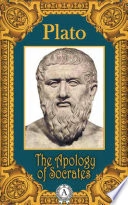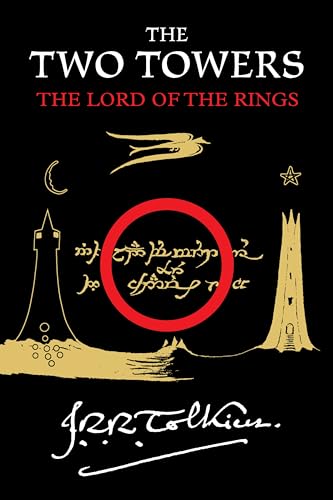Plot Summary
The Burdens of Alpha Company
The book opens with an introduction to the men of Alpha Company, a platoon of American soldiers in Vietnam, by detailing the things they carry. This list includes not only standard-issue military gear like M-16 rifles, ponchos, and steel helmets, but also deeply personal items. First Lieutenant Jimmy Cross, the platoon leader, carries letters from a girl named Martha whom he loves, though she does not love him back. He is obsessed with her, constantly daydreaming, a distraction that he believes leads to the death of one of his men, Ted Lavender, who is shot while returning from urinating. Lavender, who is always scared, carries tranquilizers and premium dope. Kiowa, a devout Baptist, carries an illustrated New Testament. Norman Bowker carries a diary, and Henry Dobbins carries his girlfriend’s pantyhose around his neck as a good-luck charm.
These physical objects are heavy, but they are dwarfed by the intangible burdens: grief, terror, love, longing, and the common secret of cowardice. The men carry the weight of their reputations and the fear of blushing. They march because they are embarrassed not to. After Lavender’s death, Lieutenant Cross burns Martha’s letters, resolving to become a better, more focused leader. He decides his duty is not to be loved, but to lead his men and prevent further carelessness. This initial story establishes the central metaphor of the book: the immense physical and emotional weight that soldiers must endure.
A Reluctant Soldier’s Path to War
In “On the Rainy River,” the narrator, Tim O’Brien, flashes back to the summer of 1968, when he received his draft notice. A recent college graduate with a full scholarship to Harvard, O’Brien feels he is too good and too smart for a war he believes is morally wrong. He spends the summer working in a pig slaughterhouse, a grim job that mirrors the slaughter he fears in Vietnam. Overwhelmed by fear and a sense of injustice, he makes a desperate decision: he writes a vague note to his parents and drives north to the Canadian border.
He stops at an old fishing resort, the Tip Top Lodge, run by an elderly man named Elroy Berdahl. Elroy seems to understand O’Brien’s crisis without ever speaking of it. He gives O’Brien space, silence, and simple work, never prying. On O’Brien’s last day, Elroy takes him fishing on the Rainy River, which forms the border between Minnesota and Canada. He steers the boat just twenty yards from the Canadian shore and sits silently, forcing O’Brien to make a choice. O’Brien is overcome by a vision of all the people from his life—family, friends, teachers, politicians—watching him from the American shore, judging him. He sees their expectations and imagines their scorn if he flees. Paralyzed by shame and the fear of being seen as a coward, he breaks down and weeps. He cannot bring himself to jump. He concludes that he went to war not out of bravery or conviction, but because he was embarrassed not to.
The Nature of a True War Story
The narrative delves into the complexities of war and memory, particularly in “How to Tell a True War Story.” O’Brien explains that a true war story is never moral, often unbelievable, and difficult to separate from what seemed to happen. He recounts the death of Curt Lemon, who steps on a rigged mortar round while playfully tossing a smoke grenade with his friend Rat Kiley. The death is instantaneous and surreal; Lemon is blown up into the branches of a tree. O’Brien describes the beauty of the sunlight around Lemon’s body, highlighting the bizarre aesthetic that can accompany horror in war.
To cope with his grief, a distraught Rat Kiley writes a heartfelt letter to Lemon’s sister, but she never replies. Later, Kiley methodically and cruelly tortures a baby water buffalo, shooting it repeatedly to inflict pain, not to kill it. The platoon watches in silence, understanding his need to express a grief that has no other outlet. O’Brien uses these events to illustrate his central thesis: a true war story is not about war itself but about sorrow, love, and memory. It’s about how sunlight hits a river, about the sisters who don’t write back, and about the impossibility of telling the absolute truth. The truth of war is often found in the grotesque, the contradictory, and the stories that are told and retold to make sense of the incomprehensible.
The Sweetheart of the Song Tra Bong
One of the most surreal and haunting tales is told by Rat Kiley about a medic named Mark Fossie, who was stationed at a remote outpost. Fossie arranges to have his high school sweetheart, Mary Anne Bell, flown into Vietnam. Initially, she is the picture of American innocence—a bubbly, pretty blonde in culottes and a pink sweater. She is fascinated by the war, however, and begins to change. She learns to handle an M-16, helps with casualties, and sheds her makeup and jewelry.
Her curiosity deepens into something more primal. She starts spending time with the secretive and dangerous Green Berets stationed at the outpost, eventually joining them on night ambushes. Fossie becomes increasingly distraught as he loses the girl he once knew. She disappears for weeks, and when she returns, she is a feral figure, wearing a necklace of human tongues and utterly assimilated into the dark, violent mystery of the jungle. She tells Fossie that he doesn’t belong there and that she has never felt more alive. Ultimately, Mary Anne disappears for good, melting into the Vietnamese wilderness, becoming a ghost story whispered among the soldiers—a part of the land itself.
The Weight of a Kill
In “The Man I Killed” and “Ambush,” O’Brien confronts the memory of killing a young Vietnamese soldier. The narrative shifts between graphic, repetitive descriptions of the dead man’s body—a star-shaped hole for an eye, a jaw in his throat—and a fictional biography O’Brien creates for him. He imagines the man was a scholar who loved mathematics, was afraid of fighting, and had been pushed into the war by family and village duty. Kiowa, a fellow soldier, tries to comfort O’Brien, urging him to stop staring and to talk about it, reminding him that it was a kill-or-be-killed situation.
Years later, O’Brien imagines his daughter Kathleen asking if he ever killed anyone. He tells her “no,” but then tells the reader the “story-truth”: he threw a grenade at the young man as he walked along a trail. It was an automatic, almost thoughtless act born of terror. The grenade exploded at the man’s feet, killing him. O’Brien admits that the man would likely have passed by without incident. He remains haunted by the act, replaying the moment in his mind, watching the young man emerge from the fog, smile, and walk on by—an alternate history where the killing never happened. This act becomes a central burden that O’Brien carries and processes through his writing.
The Death of Kiowa and Its Aftermath
The platoon sets up for the night in a field that, unknown to them, serves as the local village’s latrine. During a torrential monsoon rain, the field floods, turning into a thick, foul swamp of mud and human waste. They are hit by a mortar attack, and in the chaos, Kiowa is sucked under the muck and drowns. In “In the Field,” the surviving soldiers wade through the “shit field” the next morning, searching for his body. The search is grim and miserable, a physical manifestation of the filth of the war.
The soldiers grapple with blame. Lieutenant Jimmy Cross blames his own poor judgment in following orders to camp on such low, indefensible ground. A young, unnamed soldier (heavily implied to be Tim O’Brien) blames himself for turning on a flashlight to show Kiowa a picture of his girlfriend, believing the light drew the mortar fire. Norman Bowker feels he let Kiowa go, unable to hold on to his friend’s boot in the stinking mud. The search for Kiowa’s body becomes a search for who is responsible, but ultimately, the blame is everywhere and nowhere—on the war, on the rain, on bad luck, on everyone.
The Unspoken Wounds of a Veteran
Years after the war, in “Speaking of Courage,” Norman Bowker aimlessly drives his father’s Chevy around a seven-mile lake in his hometown. He is unable to find a purpose or connect with anyone. He imagines conversations with his father and his old girlfriend, Sally, trying to explain how he almost won the Silver Star for valor on the night Kiowa died. He pictures himself telling them about the shit field, the mortar attack, and how he let Kiowa’s boot slip from his grasp because the smell was too overpowering.
But these conversations never happen. The town is silent and uninterested in the realities of the war. Bowker feels isolated, possessing a terrible knowledge that he cannot share. He drives past the A&W, orders a burger through an intercom, but when the voice asks what’s on his mind, he can only say, “Nothing.” He wades into the lake, watching the Fourth of July fireworks, a man drowned in a past he cannot escape. In a follow-up chapter, “Notes,” O’Brien reveals that the real Norman Bowker asked him to write this story and later hanged himself, unable to bear the silence. O’Brien confesses that he invented the detail about Bowker’s failure of nerve, placing his own guilt onto his friend’s story.
The Redemptive Power of Stories
In the final chapter, “The Lives of the Dead,” O’Brien reflects on the purpose of storytelling. He recounts his first encounter with death: a nine-year-old childhood friend named Linda, who died of a brain tumor. He remembers the trauma of seeing her body in the funeral home and his subsequent need to keep her alive by dreaming about her and making up stories where they could still be together.
He connects this childhood experience to his time in Vietnam. The soldiers, he explains, used stories, dark humor, and rituals to make the dead seem less dead. They would talk to corpses, tell exaggerated tales about their fallen comrades, and use callous language to create a distance from the horror. This was their way of managing the unbearable. For O’Brien, writing stories serves the same function. By writing about Linda, Ted Lavender, Curt Lemon, Kiowa, and the young man he killed, he can bring them back to life. He concludes that stories have the power to save us, to make the dead live again in our memories, and to rescue the past by giving it a form and a future.
Characters
Tim O’Brien
The narrator and central consciousness of the book, O’Brien is a stand-in for the author himself. He is a thoughtful, educated man who goes to war against his better judgment, driven by shame and a fear of disappointing his community. Throughout the stories, he grapples with his own cowardice, his complicity in violence, and the crushing weight of his memories. Storytelling becomes his method of survival and redemption. He is obsessed with the distinction between “happening-truth” (the factual details of an event) and “story-truth” (the emotional reality), believing that fiction can often convey a deeper truth about the war experience than mere facts ever could.
Lieutenant Jimmy Cross
The platoon leader of Alpha Company, Jimmy Cross is a symbol of the immense burden of leadership. At the start of the book, he is distracted and idealistic, consumed by his unrequited love for a girl named Martha back home. He blames his romantic daydreams for the death of Ted Lavender and, in a symbolic act, burns her letters to commit himself fully to his duty. Cross is not a natural leader; he is a reluctant officer who never wanted the responsibility for his men’s lives. He carries this guilt and responsibility as his heaviest burden throughout the war.
Norman Bowker
Bowker represents the profound and isolating trauma of the post-war veteran. He returns to his small Iowa town filled with unspoken stories and a deep sense of alienation. The war has left him unable to connect with his old life or find a new purpose. His story, “Speaking of Courage,” powerfully depicts his silent suffering as he endlessly circles the town lake, trapped in the memory of Kiowa’s death. He embodies the tragedy of the soldier who survives the war only to be killed by it years later, unable to articulate his pain to a world that doesn’t want to listen.
Kiowa
A devout Baptist and a Native American, Kiowa is the moral compass and conscience of the platoon. He is kind, thoughtful, and pragmatic, often providing comfort to his fellow soldiers, especially O’Brien. He carries an illustrated New Testament, a symbol of his faith, but also his grandfather’s hunting hatchet, representing his heritage and a more practical connection to the land. His horrific death—sinking into a field of human waste during a mortar attack—is one of the most tragic events in the book, symbolizing the random, senseless, and filthy nature of the war that consumes even the best of men.
Rat Kiley
The platoon’s first medic, Rat Kiley is a skilled and courageous soldier but also a masterful storyteller known for his exaggeration. He uses stories to entertain and to process the horrors around him. His deep grief over the death of his friend Curt Lemon manifests in both a heartfelt letter and a brutal act of violence against a baby water buffalo. The relentless pressure of the war—the gore, the fear, and the “night life” of constant marches in the dark—eventually wears him down. He begins to see images of dismembered bodies everywhere, loses his grip on reality, and shoots himself in the foot to escape the war.
Mary Anne Bell
The subject of Rat Kiley’s story “Sweetheart of the Song Tra Bong,” Mary Anne is a powerful symbol of transformation. She arrives in Vietnam as the epitome of American innocence but is irrevocably changed by the war. Her initial curiosity evolves into a primal obsession with the jungle and its violence. She sheds her identity as a “sweetheart” and becomes a feral, almost mythical warrior, ultimately disappearing into the wilderness. Her story challenges traditional notions of gender and serves as a shocking allegory for how Vietnam could consume and alter anyone it touched, erasing the person they once were.
Core Themes
Story-Truth vs. Happening-Truth
This is the central theme of the book. O’Brien argues that the literal, factual truth of an event (“happening-truth”) is often incapable of conveying the emotional and psychological reality of war. To make a reader feel the fear, confusion, and moral ambiguity of combat, a storyteller must sometimes invent or alter details. This “story-truth” is truer because it captures the subjective experience. O’Brien demonstrates this by telling the story of killing a man multiple times, admitting that parts are fabricated but insisting that the invented versions are necessary to convey his guilt and the humanity of his victim. For him, stories are not for reporting facts but for making the past present and for sharing the unbearable weight of memory.
The Burdens of War
The title itself announces this crucial theme. The soldiers carry immense physical loads—weapons, gear, food, personal items—but these are secondary to the emotional and psychological burdens they bear. They carry the weight of fear, grief, guilt, and longing. They carry the responsibility for each other’s lives and the memories of the dead. Lieutenant Cross carries his love for Martha; Norman Bowker carries his failure to save Kiowa; O’Brien carries the memory of the man he killed. These intangible burdens are inescapable and follow the soldiers long after they have left the battlefield, shaping the rest of their lives.
The Psychological Effects of War
The book is a profound exploration of how war damages the human psyche. It shows how soldiers become numb, desensitized, and capable of both great cruelty and profound compassion. The constant proximity to death and violence forces them to adopt dark humor and callous language as coping mechanisms. The experience blurs moral lines, as seen in Rat Kiley’s torture of the water buffalo, and can lead to a complete loss of identity, as with Mary Anne Bell. For soldiers like Norman Bowker and Rat Kiley, the psychological strain becomes too much to bear, leading to self-destruction either years later or on the battlefield itself.
Storytelling as an Act of Redemption and Survival
For O’Brien, the act of telling stories is a way to process trauma and give meaning to the meaningless chaos of war. By writing about his fallen comrades, he keeps their memories alive, rescuing them from the finality of death. Stories become a way to confront guilt, as O’Brien does with the man he killed, and to bear witness to the suffering of others, as he does for Norman Bowker. In the final chapter, he explicitly states that “stories can save us.” They provide a space where the dead can speak, where miracles can happen, and where a writer can attempt to save his younger self by making sense of what he endured.
Plot devices
Metafiction
The Things They Carried is a classic example of metafiction, a story that is self-aware of its status as a work of literature. The narrator, “Tim O’Brien,” frequently interrupts the narrative to comment on the process of storytelling itself. He discusses his choices as a writer, questions the reliability of his own memory, and directly addresses the reader about the nature of truth. For instance, in “How to Tell a True War Story,” he provides a list of criteria for identifying a true war story, and in “Good Form,” he explicitly admits to inventing key details, including the fact that he killed a man. This technique is not merely stylistic; it reinforces the book’s central theme that the emotional truth of a story matters more than its factual accuracy.
Blurring Fact and Fiction
Throughout the book, O’Brien intentionally blurs the line between autobiography and fiction. The narrator shares the author’s name and many biographical details, giving the stories the feel of a memoir. However, he repeatedly reminds the reader that he is a storyteller who invents and embellishes to achieve a greater “story-truth.” By dedicating the book to the fictional characters of Alpha Company and then later discussing Norman Bowker as a real person who inspired a story, O’Brien creates a disorienting but powerful effect. This forces the reader to abandon the simple question “Did this really happen?” and instead focus on the emotional and psychological impact of the events described.
Non-Linear and Fragmented Narrative
The book rejects a traditional chronological plot in favor of a fragmented structure that mimics the nature of memory. Stories jump back and forth in time—from the jungles of Vietnam to a pre-war summer in Minnesota to a post-war afternoon in Iowa. Events are often revisited from different perspectives or with new details added. The death of Kiowa, for example, is recounted in several different chapters (“Speaking of Courage,” “Notes,” “In the Field”), each time revealing a new layer of guilt and meaning for the different soldiers. This structure reflects how trauma is experienced: not as a linear story, but as a series of recurring, disjointed, and often contradictory memories.
Repetition
O’Brien uses repetition as a powerful device to emphasize the weight of certain memories and to create a sense of ritual or mantra. Key images and phrases recur throughout the book, such as the description of the dead Vietnamese soldier with a “star-shaped hole” for an eye, Ted Lavender’s death being described as “zapped while zipping,” and the phrase “the things they carried.” This repetition gives the narrative a lyrical, almost poetic quality and reinforces the obsessive nature of traumatic memory. The act of repeating these stories becomes a way for the narrator to continually process and attempt to make sense of events that defy easy explanation.





